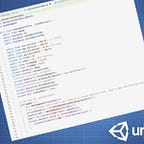Wii U: Best option to extend storage
Wii U USB hard drives compared 2021
I have a couple of Wii U’s and I think they are one of the best devices available for playing the full gamut of great Nintendo games past and present, especially with the current state of the various hacks allowing you to play everything from NES, SNES, GameCube, Wii and NDS.
A usual pain point is running out of space to install games on the internal NAND storage, you can’t really use the SD card as you need it to be FAT for passing data through the homebrew channel, you can partition it but the SD slot seems pretty slow.
The easiest option is to plug something into one of the 4 USB ports. You can only use one port at a time and you have to switch the machine off to add or remove a new device, so you can’t have 4 memory sticks in action at the same time!
To compare with the internal NAND I checked a teardown and it showed the chip is a Samsung KLM8g2fe3b-b001, according to the data sheet it’s performance is: Sequential Read 44Mb/s, Sequential Write 4 Mb/s. Which seems pretty bad by today’s standards!
The USB ports are USB2.0 so in theory it could read / write at 53Mb/s and so you might be able to find something that will match it.
I’m looking at 2 options either a USB SSD or a decent USB stick, here’s my comparisons
I want something small and unobtrusive, so I’m going to test 2 small USB “fit” sticks and a mini USB SSD.
SanDisk Ultra Fit 128GB (marketing says: up to 130Mb/s read)
Samsung Fit Plus 128GB (marketing says: Speed up to 400Mb/s)
ADATA SD700 SSD 512GB (marketing says: up to 440 MB/s)
Kingston G4 16GB (An “everyday” cheap USB stick for comparison)
My first simple benchmark was using CrystalBench on Windows and XBench on a Mac
CrystalBench on Windows
These are the 32k block results, note the “fastest” speeds were achieved with 1M blocks but I expect the internal Wii U drive format is more likely to be this size.
XBench on Mac
These are 256k block sizes, and I have a feeling that the ports may be USB2 on this Mac
I think the main takeaway is that the Samsung is slightly faster than the Sandisk and the Adata SSD is way faster than the USB ports. Likely they’ll all run at similar speeds in the real world on the Wii U. Lets find out…
Price
At time of writing this (March 2021) the prices were:
Adata SD700 512G — £50 Amazon (recently went to £75) [10G/£]
Samsung Fit 128G — £20 from Samsung store [6.4G/£]
Sandisk Fit 128G — £15 from Picstop [8.5G/£]
Kingston 16G — now cheaper, 64G @ £5.99 [10G/£]
Speed
Copying data, here I copied Captain Toad Treasure Tracker (1255M) between various devices using the system copy function.
SD Card to NAND — 3.9 Mb/s(1255M in 5m.22s)
this fits with the NAND datasheet with the NAND being the bottle neck when saving data from the SD card. I also copied back the data from the SanDisk to NAND, took 6m.28s.
NAND to SanDisk — 7.3Mb/s(1255M in 2m.52s)
NAND to Samsung — 8.8Mb/s(1255M in 2m.22s)
NAND to AdataSSD — 9.2Mb/s(1255M in 2m.16s)
NAND to Kingston — 3.5Mb/s(1255M in 5m.58s)
Game Startup
Captain Toad Treasure Tracker
NAND title 4s , intro 19s
SanDisk title 3s intro 16s
Samsung title 3s intro 16s
Adata SSD title 3s intro 16s
Kingston title 3s intro 18s
The physical fit the SanDisk is a little bit smaller, and is virtually unnoticeable the Samsung protrudes by about 3mm whereas the SanDisk sits inside the port a little more and is smaller making it a good 5mm less protruding.
Postscript
I used the SSD for about 4 weeks with no issue until it suddenly started struggling for power and then required a separate power supply to work correctly. I’m unsure exactly what happened, did it start needing more power or did the Wii U stop supplying enough? No idea but I’m now using a Y power splitter.
One unusual thing I did find was that if I put the SSD drive on top of the WiiU the wifi would stop working, so I guess some sort of interference was being caused.
I think any one of these drives is a great option, if 128G is big enough then the SanDisk can be found inexpensively and does a great job. It doesn’t seem worthwhile paying the extra for the increased “on paper” performance of the Samsung. The SSD doesn’t get you any extra horsepower and as I ended up needing a power splitter for it anyway I think a standard external hard drive would be just as good an option, and I would have double the capacity for the same price.
2 weeks later: I returned and added in the Kingston to the tests, its cheap and basic and runs okay on the Toad test, I’m going to update this with a more performance heavy test, maybe testing Splatoon startup might be a better test as its really slow on the NAND…
